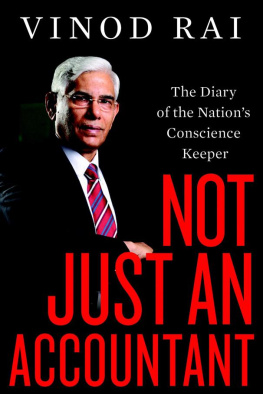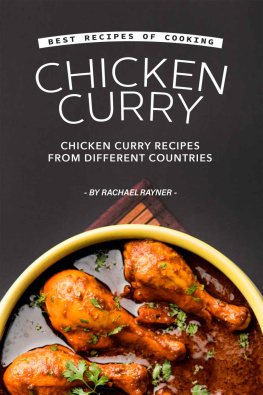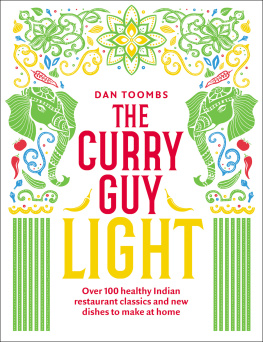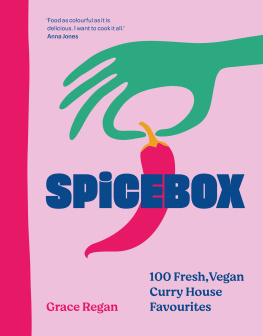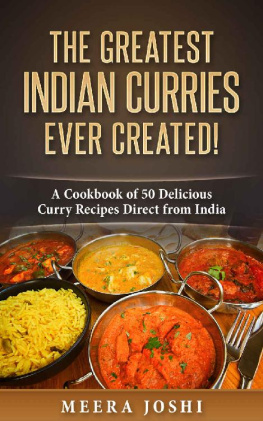The idea of writing a book on Indian cooking with international appeal has haunted me for many years.
My friends in India and abroad who have seen me in their kitchen and in my own have persuaded me to set out the techniques that I follow and to write down the recipes that have come down to me from the past generations of my family.
Foremost in my thoughts must be my father, Aftab Rai, whose culinary imagination and remarkable improvising skills were legendary within our family. His name will appear on several of the recipes, since he was their originator. Through him I have felt the strong influence of not only Indian, but Persian and Arabic cooking that he in turn received from his forebears. Entwined amongst these were other influences from Italian, French and Imperial kitchens that were often found at the table of Sir Ganga Ram, his grandfather.
The recipes that I now offer the reader derive their appeal and elegance from the exquisite blend of spices and many other selective ingredients.
The generic term spices includes herbs and condiments which have from time immemorial grown on Indian soil and these have been readily available to the cooks of this land. It is no wonder that they have been put to such excellent use.
There are recipes handed down within the family, from friends, and some which are creations of my own. All of them embody the history and the romance of diverse flavours.
I do hope that this book will help in the understanding of the principal components and assembly of curry.
Introduction
India is a home to many religions, cultures, castes and creeds, where the climates vary from temperate to tropical to near equatorial, where a variety of vegetables and lentils are found in abundance. All kinds of meat, fish and fowl are available. Naturally, the eating habits of the people vary greatly. Some eat meat, others do not. For some pork is forbidden, for others eating beef is a sacrilege. Some eat fish and no meat. Many forgo tubers, while some avoid roots. Yet the concept of curry is common to all these people, and the variety is absolutely amazing.
The word curry is universally used for any recipe consisting of vegetables, fish, chicken and/or meat, seasoned with various herbs and condiments which give the characteristic flavour and taste and enhance the texture. It probably originated from the Tamil kari meaning a blend of spices cooked with vegetables. It is believed that the 18th century British General Clive, when in South India, added meat and water to the kari, thus making a sauce of turmeric and other strong spices. This apparently was the genesis of the Madras curry.
To some the title Curry Curry Curry may conjure up images of red, hot chillies and curry powders. It is a mistaken notion that the curry is necessarily hot and corrosive. It is not, though an addition of extra hot peppers does make a curry hot. Traditionally, at home and at regular catering places curries are only marginally seasoned with chillies. Enterprising newcomers to the world of curry need not fear the pungent or hot curry, and neither should they be misled by the common belief that curries are difficult to make.
The spices and herbs that go into the making of the curry masalas are several, but there are 4 to 5 basic ones that form an essential ingredient of the masalas. These are turmeric, coriander, cumin, chilli and ginger. In the recipes the measures of every spice or herb used is given. A mixture of 2 or more of the herbs makes the masala, which is the primary ingredient that endows the curry with a unique flavour. The correct balance is the primary factor in the preparation of curries; mixing of the spices and the use of the masalas. It is very essential to achieve the right balance in the mixing proportions of spices and herbs used in the masalas. The ingredients and the cooking time should be carefully controlled.
The use of spices, herbs and masalas has been explained in every recipe along with the cooking stages where these should be used in the curry.
Some recipes do not have any cooking stages. These are mostly composite recipes like biryani, etc. Some recipes are based on European cooking techniques, such as the egg curries and batter fried dishes. But all these have curry spices. The curry mixtures, while unique to each family, differ in their formulation, because of the availability of different types of spices and the innovations introduced by each cook.
The herbs and spices have been widely used in the traditional methods of Indian medicine. Turmeric prevents ulceration. Nutmeg is excellent for mitigating diarrhoea if taken freshly ground with a little milk. Chillies contain vitamin K which assists blood coagulation. They are also a rich source of vitamins A and C. Cinnamon, mint and ginger have essential oils which aid digestion and can at times prevent diorrhoea. They are used in carminative mixtures. Clove oil for toothache and dental asepscis is still used all over the world.
It should be noted that apart from some exceptional brands, ready-made curry powders are never acceptable to serious cooks. Most brands are usually fortified with flour, food colours, indifferent qualities of spicesall of which are then over-powdered with chillies. Not only is it cheaper to combine the herbs and spices oneself, it also enables one to control the quality of ingredients and the proportions of the herbs and spices in the masala. By and large, spices are now available all over the world in reliable, special stores and come with standard specifications that can be conveniently followed.


